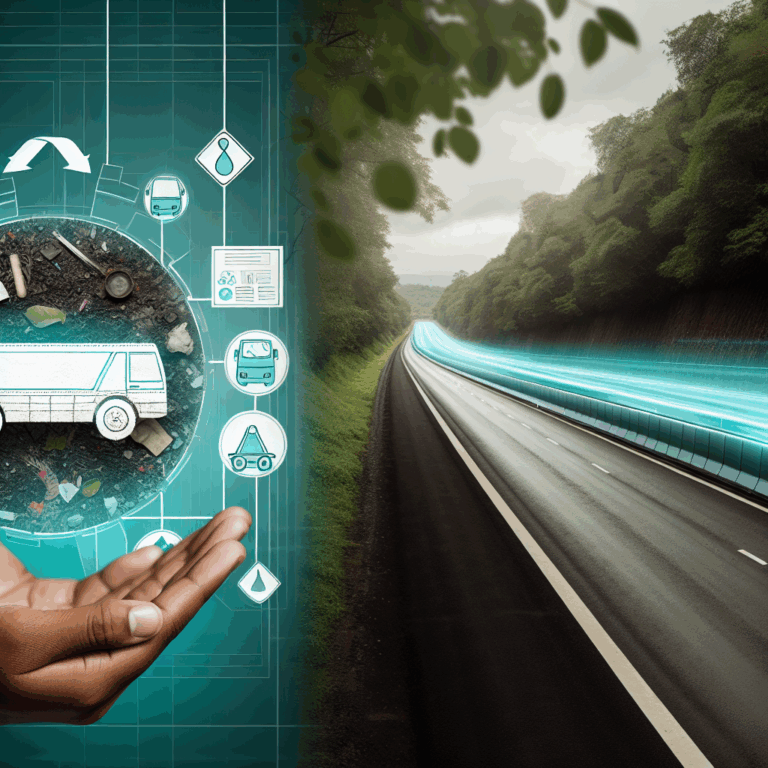Copyright @ 2023 www.digimitr.com. All rights reserved.

Unlocking the Future: An In-Depth Guide to the Ministry of Power’s EV as a Service Programme
Explore the key aspects of the government scheme titled “Unlocking the Future: An In-Depth Guide to the Ministry of Power’s EV as a Service Programme”. This scheme is managed by the relevant ministry and aims on delivering benefits to eligible beneficiaries.
Here is a comprehensive overview:
Introduction
The global shift towards sustainable energy and transportation solutions has never been more urgent. One of the leading initiatives in this movement is the Ministry of Power’s EV as a Service Programme, aimed at promoting Electric Vehicles (EVs) in India. This program is aligned with the country’s broader goal of reducing carbon emissions, improving air quality, and innovating the Indian transport sector. As cities become more congested and pollution levels rise, the adoption of electric mobility has emerged as a viable solution. The Ministry of Power’s initiative seeks to make electric vehicles accessible, affordable, and practical for the general population while enhancing the infrastructure surrounding them.
Eligibility Criteria
To participate in the EV as a Service Programme, several eligibility criteria must be met. Primarily, the program targets businesses interested in adopting EVs for various purposes – from logistics companies to ride-sharing platforms. Businesses must demonstrate their operational capabilities and commitment to the sustainable transportation sector.
In addition, the Ministry has outlined requirements regarding the scale of operations, infrastructure readiness, and financial stability. Entities should possess a minimum fleet size to ensure that the program has a significant reach and impact. Furthermore, organizations must be registered in India and meet any other regulatory compliance requirements set forth by local or national legislation.
Key Features and Benefits
The EV as a Service Programme boasts several key features aimed at enhancing the electric mobility landscape. One of the standout elements is centralized monitoring and management of EV fleets through state-of-the-art technology platforms. This allows operators to track vehicle performance, monitor battery health, and optimize routes for efficiency.
Another significant feature is the provision of charging stations which will be strategically placed to support fleet operations. With a robust charging network, EV operators can alleviate range anxiety among drivers, making electric mobility a practical alternative.
From a financial perspective, the program offers various incentive mechanisms, such as subsidies for purchasing EVs and grants for infrastructure development. The potential for reduced fuel costs and lower maintenance expenses further adds to the economic appeal.
The benefits extend beyond logistics and operational efficiency; the program also contributes to broader environmental goals by encouraging cleaner air and reducing noise pollution. By facilitating the transition to electric vehicles, the Ministry aims to mitigate the impact of transportation on climate change.
Application Process
Applying for the EV as a Service Programme involves a multi-step process designed to streamline participation while ensuring all prerequisites are met. The first step typically is to fill out a detailed application form that provides insights into the company’s operations, fleet size, and readiness for adopting EV technology.
Once submitted, the Ministry reviews applications against predefined criteria. Successful candidates will then be required to participate in an onboarding process which includes training sessions on the management of electric fleets and best practices.
Additionally, selected businesses may need to undergo an audit to ensure compliance with the established guidelines before receiving further assistance or benefits. The process is transparent, aiming to encourage participation while also ensuring that the quality standard is upheld.
Funding and Budget
The funding for the EV as a Service Programme comes from both governmental allocations and partnerships with private sectors. The Ministry of Power has designated a specific budget aimed at subsidizing the costs associated with the purchasing of EVs and the establishment of the necessary charging infrastructure.
Moreover, strategic collaborations with financial institutions can help offer low-interest loans for businesses while incentivizing the adoption of electric fleets. This multifaceted funding strategy aims to alleviate the initial financial burden that businesses may encounter while transitioning to electric vehicles.
It’s essential for participating businesses to stay updated with the most recent budgetary changes or funding opportunities made public by the Ministry. The financial landscape for the EV sector is dynamic, influenced by emerging technologies and market demands.
Achievements or Impact
Since its inception, the Ministry’s EV as a Service Programme has yielded impressive results. Reports indicate a significant increase in the number of electric vehicles registered across various urban centers. This has contributed to reduced pollution levels and improved compliance with international environmental standards.
The program also serves as a catalyst for technological advancements, promoting innovations in battery technology and sustainable charging solutions. Local manufacturing has received a boost, creating job opportunities within the electric vehicle and related sectors.
Testimonials from participating businesses underscore the program’s overall positive impact. They highlight improved operational efficiencies and a notable shift in consumer perception toward electric mobility. Such testimonials reinforce the idea that adopting electric vehicles can be both operationally viable and responsible.
Challenges
While the EV as a Service Programme has seen numerous achievements, it is not without challenges. One significant hurdle is the current limitations of charging infrastructure across the country, particularly in rural areas. The speed at which charging stations can be established often does not match the rapid pace of EV adoption.
Additionally, consumer reluctance regarding EV technology and battery life remains an obstacle. Educational initiatives and awareness campaigns are crucial to address these concerns and inform potential customers about the benefits of electric vehicles.
Another challenge is the upfront costs associated with electric vehicles, which can be substantially higher than conventional automobiles. While the program offers subsidies, the financial gap still poses a barrier for many businesses looking to enter the market.
Recent Updates
Recent developments have seen the Ministry of Power update its guidelines to make the EV as a Service Programme more inclusive. There are ongoing efforts to enhance collaboration with local governments to establish more charging stations and service centers.
Moreover, technology firms are increasingly being integrated into the framework to offer smart solutions, such as mobile apps for tracking fleets and real-time data analytics.
In addition, the Ministry has announced plans for pilot projects that will bring EVs to remote areas, aiming to showcase their practicality and adaptability beyond metropolitan regions. The commitment to continuously update and refine the program reflects a proactive approach in realizing its goals.
Conclusion
The Ministry of Power’s EV as a Service Programme represents a significant step towards sustainable transportation in India. With its comprehensive structure, eligibility criteria, and focus on innovation, the initiative has the potential to reshape the landscape of urban mobility. Armed with various incentives, funding schemes, and the backing of technology advancements, this program is poised to foster a cleaner environment, a healthier population, and a more robust economy. As we look towards the future, continued support, education, and infrastructure development will be critical to unlocking the full potential of electric mobility in India.
FAQ
1. What types of businesses can participate in the EV as a Service Programme?
The program primarily targets businesses involved in logistics, transportation, and ride-sharing services. However, any organization with a feasible plan to adopt electric vehicles can apply, provided they meet the eligibility criteria.
2. Are subsidies available for purchasing electric vehicles under the program?
Yes, the Ministry of Power provides various financial incentives, including subsidies for the purchase of electric vehicles and grants for establishing charging infrastructure to encourage participation.
3. What are some common challenges faced by businesses adopting electric vehicles?
Common challenges include limited charging infrastructure, upfront costs of EVs, and consumer skepticism regarding battery life and maintenance. The program aims to address these concerns through funding and infrastructure development initiatives.
For more information, check out official government site,
Official government website or relevant source not provided.
Stay updated on related schemes and initiatives using hashtags: #Unlocking #Future #InDepth #Guide #Ministry #Powers #Service #Programme
Share your thoughts about this scheme in the comments below!





